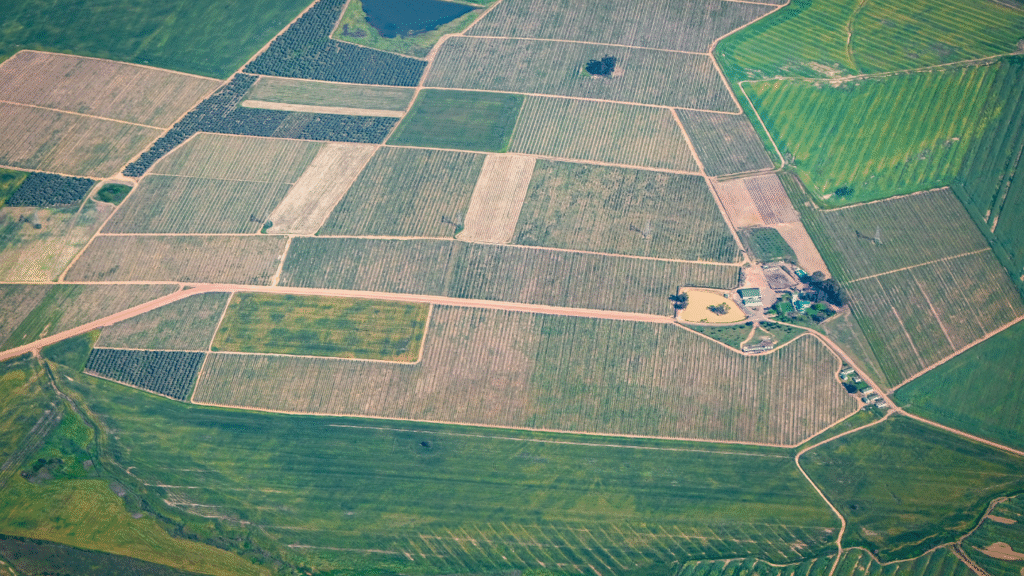When buying or selling land in India, people often ask about “acre to bigha” conversions because these are common units for measuring land. An acre is a standard unit used worldwide, while bigha is a traditional unit popular in many Indian states. Knowing how to convert between them helps farmers, real estate agents, and buyers make smart decisions. The conversion isn’t always simple since bigha sizes vary across regions, but understanding the basics can save time and confusion. This article explains what acres and bighas are, how to convert between them, and why these measurements matter. Whether you’re planning to buy farmland or just curious, this guide will make the process clear and easy to follow. Let’s dive into the details of acre to bigha conversions and how they work in real life.
What Is an Acre?
An acre is a unit of land measurement used globally, especially in countries like the United States, United Kingdom, and India. It equals 43,560 square feet or about 4,047 square meters. Picture a football field—it’s roughly the size of an acre. In India, acres are often used in legal documents and real estate deals because it’s a standard unit that everyone understands. One acre is always the same size, no matter where you are, making it reliable for comparing land across regions. Farmers use acres to plan crops, while developers use them to estimate project sizes. Knowing the size of an acre helps when converting to local units like bigha, especially in rural areas where traditional measurements are common. Understanding acres is the first step to mastering land conversions.
History of the Acre
The acre has roots in medieval England, where it was defined as the land a farmer could plow in one day with a team of oxen. It became a standard unit in many countries over time. In India, the British introduced acres during colonial times, and it’s still used in official records. Its fixed size makes it a trusted unit for international and local land deals. Today, acres are key in agriculture and real estate planning.
How Acres Are Used in India
In India, acres are common in legal papers, government records, and real estate. Farmers use acres to measure fields for crops like wheat or rice. Developers use it to plan housing or commercial projects. In states like Punjab or Haryana, you’ll hear “acre” in land deals alongside local units like bigha. It’s a universal way to compare land sizes, especially when working with banks or buyers from other regions.
What Is a Bigha?
A bigha is a traditional land measurement unit widely used in India, especially in northern and eastern states like Uttar Pradesh, Bihar, and Rajasthan. Unlike an acre, the size of a bigha varies by region. For example, in Uttar Pradesh, one bigha is about 0.625 acres, while in Bihar, it’s closer to 0.618 acres. This makes conversions tricky but important. Bighas are popular in rural areas for measuring farmland or plots. Farmers and locals prefer it because it’s part of their tradition and easier to understand in daily life. Knowing the local bigha size is key when converting to acres for legal or sale purposes. Bigha’s flexibility makes it unique, but it requires careful calculation to avoid mistakes.
Variations of Bigha Across India
Bigha sizes differ across Indian states, which complicates conversions. In Uttar Pradesh, one bigha equals 20 biswas or about 27,000 square feet (0.625 acres). In Bihar, it’s around 27,220 square feet (0.618 acres). In Rajasthan, a bigha is smaller, often 0.4 acres. These differences come from historical and regional practices. Always check the local bigha size before converting to acres to ensure accuracy in land deals.
Why Bigha Is Still Popular
Bigha remains popular in rural India because it’s tied to tradition and local farming practices. Farmers find it easier to estimate land in bighas for crops or irrigation. In villages, people use bigha in daily conversations about land, making it more relatable than acres. Even in modern real estate, bigha is used alongside acres to appeal to local buyers. Its cultural importance keeps it relevant despite varying sizes.
How to Convert Acre to Bigha
Converting acre to bigha depends on the state’s bigha size, as it’s not a standard unit. Generally, one acre equals about 1.6 bighas in Uttar Pradesh (where 1 bigha is 0.625 acres). In Bihar, one acre is roughly 1.62 bighas. To convert, divide the number of acres by the bigha size in acres for that region. For example, 5 acres in Uttar Pradesh would be 5 ÷ 0.625 = 8 bighas. Always confirm the local bigha size to avoid errors. Using online calculators or consulting local revenue offices can make conversions easier. This step is crucial for accurate land deals and planning.
Conversion Formula and Examples
The formula is simple: Number of bighas = Acres ÷ Bigha size (in acres). For Uttar Pradesh (1 bigha = 0.625 acres), 2 acres = 2 ÷ 0.625 = 3.2 bighas. In Bihar (1 bigha = 0.618 acres), 2 acres = 2 ÷ 0.618 = 3.24 bighas. Always use the local bigha size. For example, if you’re selling 10 acres in Rajasthan (1 bigha = 0.4 acres), it’s 10 ÷ 0.4 = 25 bighas. Double-check with local records for accuracy.
Tools for Easy Conversion
Converting acre to bigha is easier with tools like online calculators or mobile apps designed for land measurement. Websites like 99acres or MagicBricks offer conversion tools for Indian states. You can also use a simple calculator by entering the local bigha size. Local revenue offices or patwaris (land record keepers) can provide exact bigha sizes for your area. These tools save time and reduce mistakes, especially for large land deals.
Why Acre to Bigha Conversion Matters
Understanding acre to bigha conversions is important for anyone dealing with land in India. Farmers need it to plan crops or sell land accurately. Real estate agents use it to explain property sizes to clients. Buyers want clear measurements to avoid overpaying. Since bigha varies by region, wrong conversions can lead to disputes or financial loss. Knowing the correct conversion ensures fair deals and helps with legal paperwork. It also bridges traditional and modern measurement systems, making communication easier between rural sellers and urban buyers. This knowledge is key for smooth land transactions and planning.
Importance in Real Estate
In real estate, acre to bigha conversions prevent misunderstandings. Buyers in cities often think in acres, while rural sellers use bighas. Accurate conversions ensure both parties agree on the land size. For example, a 4-acre plot in Uttar Pradesh (1 bigha = 0.625 acres) is 6.4 bighas. Misjudging this could affect pricing or contracts. Real estate agents use conversions to create clear listings, helping clients make informed choices and avoid legal issues.
Impact on Farming and Agriculture
Farmers rely on acre to bigha conversions to plan crops, irrigation, or land sales. Knowing how many bighas are in an acre helps them estimate seed or fertilizer needs. For example, a farmer with 3 acres in Bihar (1 bigha = 0.618 acres) has about 4.85 bighas. This affects how much they plant or sell. Accurate conversions also help when applying for government subsidies, which may use acres in official forms but bighas locally.
Challenges in Acre to Bigha Conversion
Converting acre to bigha isn’t always straightforward because bigha sizes vary across states. This can lead to confusion or errors in land deals. Some regions use smaller units like biswa or katha, adding complexity. Old records may use outdated bigha sizes, causing disputes. Lack of awareness about local measurements can also lead to mistakes. To avoid problems, always verify the bigha size with local authorities or use reliable conversion tools. Understanding these challenges helps ensure accurate and fair land transactions.
Regional Variations and Confusion
The biggest challenge is that bigha sizes differ by state. For example, one bigha in Uttar Pradesh (0.625 acres) is larger than in Rajasthan (0.4 acres). This variation confuses buyers or sellers working across states. Even within a state, some areas use kuccha or pucca bighas, which differ in size. Checking with local revenue offices or patwaris is the best way to confirm the exact bigha size for accurate conversions.
Avoiding Errors in Land Deals
Errors in acre to bigha conversions can lead to costly mistakes. For example, assuming one bigha is 0.5 acres when it’s 0.625 acres could mean overpaying for land. To avoid this, double-check conversions with local experts or online tools. Always include the exact bigha size in contracts. Consulting a lawyer or land surveyor can also prevent disputes, ensuring both parties agree on the land’s size and value.
Tips for Accurate Acre to Bigha Conversion
To convert acre to bigha correctly, start by confirming the bigha size in your state. Use a reliable calculator or app for quick results. Cross-check with local revenue records or a patwari for accuracy. Write down the conversion formula (Acres ÷ Bigha size in acres) and keep it handy. If dealing with multiple states, make a chart of bigha sizes for reference. For big deals, hire a professional surveyor to verify measurements. These steps make conversions easy and reduce the risk of errors in land transactions.
Using Local Resources
Local resources like revenue offices, patwaris, or village panchayats can provide accurate bigha sizes for your area. They keep records of land measurements and can clarify whether kuccha or pucca bighas are used. Visiting the local tehsil office or checking government websites can also help. These sources ensure your conversions match official records, avoiding disputes in sales or planning.
Online Tools and Calculators
Online tools like 99acres, Housing.com, or dedicated land conversion calculators simplify acre to bigha conversions. Just enter the number of acres and the state’s bigha size, and the tool does the math. Mobile apps like Land Area Converter are also handy for quick calculations. These tools are user-friendly and reduce errors, especially for those new to land measurements. Always verify results with local data for accuracy.



